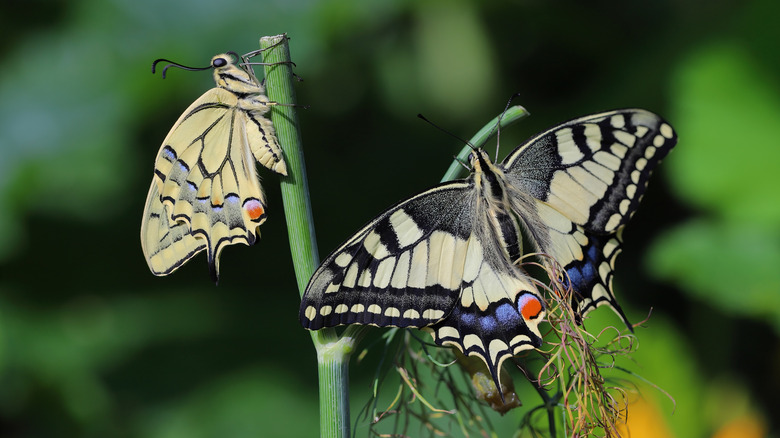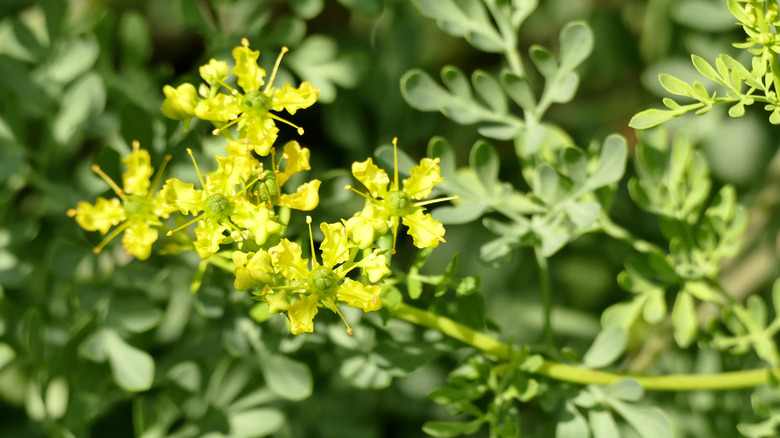Keep Butterflies Coming To Your Garden With One Hardy Perennial Herb They Adore
We may receive a commission on purchases made from links.
Is it just a coincidence that a flower resembling a butterfly is also vital for certain butterfly species? Common rue (Ruta graveolens) is a bushy, feathery perennial that puts on a show of green-centered, yellow-petaled flowers that look like a butterfly sunning its wings. Many types of butterflies and other pollinators visit these alluring blooms for their nectar, but it is also a host plant for the black, anise, and giant swallowtail butterfly species.
Common rue's traits are anything but common. It boasts both aromatic flowers and leaves, and, although it's irritating to touch and poisonous when eaten in large quantities, it's been used for culinary and superstitious purposes for centuries. These days, the bitter leaves aren't often added to dishes, and most users probably won't be scattering fresh rue on the ground to ward off witches or the plague. However, if you are looking for a lovely lemon-yellow addition to your pollinator garden, rue is worth getting to know.
Rue isn't native to North America, but it hasn't shown signs of becoming invasive. On this continent, it fills gardens with a variety of butterflies from zones 4 to 10. Because of this, there are few places unsuitable for this flowering herb as long as the soil isn't too wet. Adding to its list of winning traits, common rue is easy to grow in poor soil and has low water needs once it's established. Common rue self-seeds well without becoming invasive, a fact that might make up for the plants only living about five years each.
Growing common rue successfully
If you've been lamenting underwhelming soil quality in your garden, common rue's for you. It grows happily and heartily in rocky, clay, sandy, loamy, or shallow soil, adding color to your landscape with its flowers as well as its fluttering visitors. Yet, it will settle most successfully into well-draining, moist, and somewhat fertile soil. Tuck common rue into spots with full to partial sun (ones that provide six to seven hours of sun per day). The plants are easygoing enough not to need fertilizer, and they're drought-resistant plants that will thrive without much water once they are established.
When starting the seeds, wait for temperatures to even out around 70 degrees Fahrenheit. Plant seeds by scattering them, then pressing them lightly into the soil with your hands. They may take up to 28 days to sprout. When they reach 4 inches in height, thin the seedlings to 1½ to 2 feet apart. This might seem like an excessive amount of space, but each plant can grow up to 3 feet tall and wide.
Although common rue is tough enough to weather a huge range of USDA zones, it'll need a bit of insulation overwintering in zones 4, 5, and 6a; cover the plants with about 2 feet of mulch in winter if you live in these zones. When spring rolls around, trim the woody branches back to spur new growth. Although common rue doesn't need much in the way of supplements, a bit of balanced fertilizer in the spring can give the plants a nice boost once new growth has appeared.

